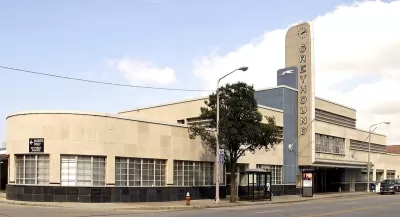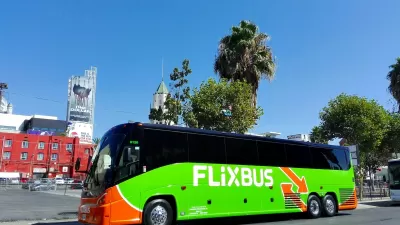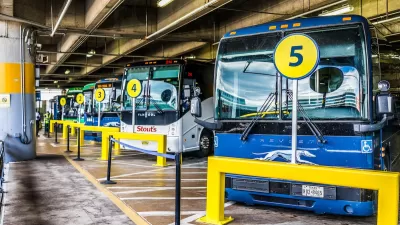The most affordable form of long-distance travel is being jeopardized as riders find themselves literally kicked to the curb.

An article in Daily Kos highlights the impact that recent closures of intercity bus terminals have on the riders who rely on buses. “Bus lines provide a real, tangible benefit to millions of people and it's by far the most cost-effective way to travel, as flights are expensive and American trains provide limited service.”
The contempt for buses was apparent during the pandemic, when the government rescued commercial airlines with over $60 billion. Yet buses, which make 600 million passenger trips per year and employ over 100,000 people, received $100 million—or just 16% of what the airlines were given.
Yet terminals around the country have been shuttered and bought up by hedge funds for redevelopment — “In 2022, Twenty Lake Holdings bought 33 Greyhound stations in prime locations for only $140 million” — leaving bus riders with no access to services like shelter, ticket counters, or bathrooms and forcing passengers to wait for buses on sidewalks and in parking lots. “Curbside bus service can clog up city streets with passengers and their luggage, snarl traffic, increase pollution, and frustrate local business owners.”
Meanwhile, the 37,000-square-foot former bus terminal in downtown Cleveland will be replaced with an apartment building and nightclub. According to real estate professor Stijn Van Nieuwerburgh, “it is clear what is happening here: an important piece of transit infrastructure is being sacrificed in the name of higher profits.”
FULL STORY: America's most affordable travel option is disappearing

Alabama: Trump Terminates Settlements for Black Communities Harmed By Raw Sewage
Trump deemed the landmark civil rights agreement “illegal DEI and environmental justice policy.”

Study: Maui’s Plan to Convert Vacation Rentals to Long-Term Housing Could Cause Nearly $1 Billion Economic Loss
The plan would reduce visitor accommodation by 25% resulting in 1,900 jobs lost.

Why Should We Subsidize Public Transportation?
Many public transit agencies face financial stress due to rising costs, declining fare revenue, and declining subsidies. Transit advocates must provide a strong business case for increasing public transit funding.

Paris Bike Boom Leads to Steep Drop in Air Pollution
The French city’s air quality has improved dramatically in the past 20 years, coinciding with a growth in cycling.

Why Housing Costs More to Build in California Than in Texas
Hard costs like labor and materials combined with ‘soft’ costs such as permitting make building in the San Francisco Bay Area almost three times as costly as in Texas cities.

San Diego County Sees a Rise in Urban Coyotes
San Diego County experiences a rise in urban coyotes, as sightings become prevalent throughout its urban neighbourhoods and surrounding areas.
Urban Design for Planners 1: Software Tools
This six-course series explores essential urban design concepts using open source software and equips planners with the tools they need to participate fully in the urban design process.
Planning for Universal Design
Learn the tools for implementing Universal Design in planning regulations.
Smith Gee Studio
Alamo Area Metropolitan Planning Organization
City of Santa Clarita
Institute for Housing and Urban Development Studies (IHS)
City of Grandview
Harvard GSD Executive Education
Toledo-Lucas County Plan Commissions
Salt Lake City
NYU Wagner Graduate School of Public Service





























